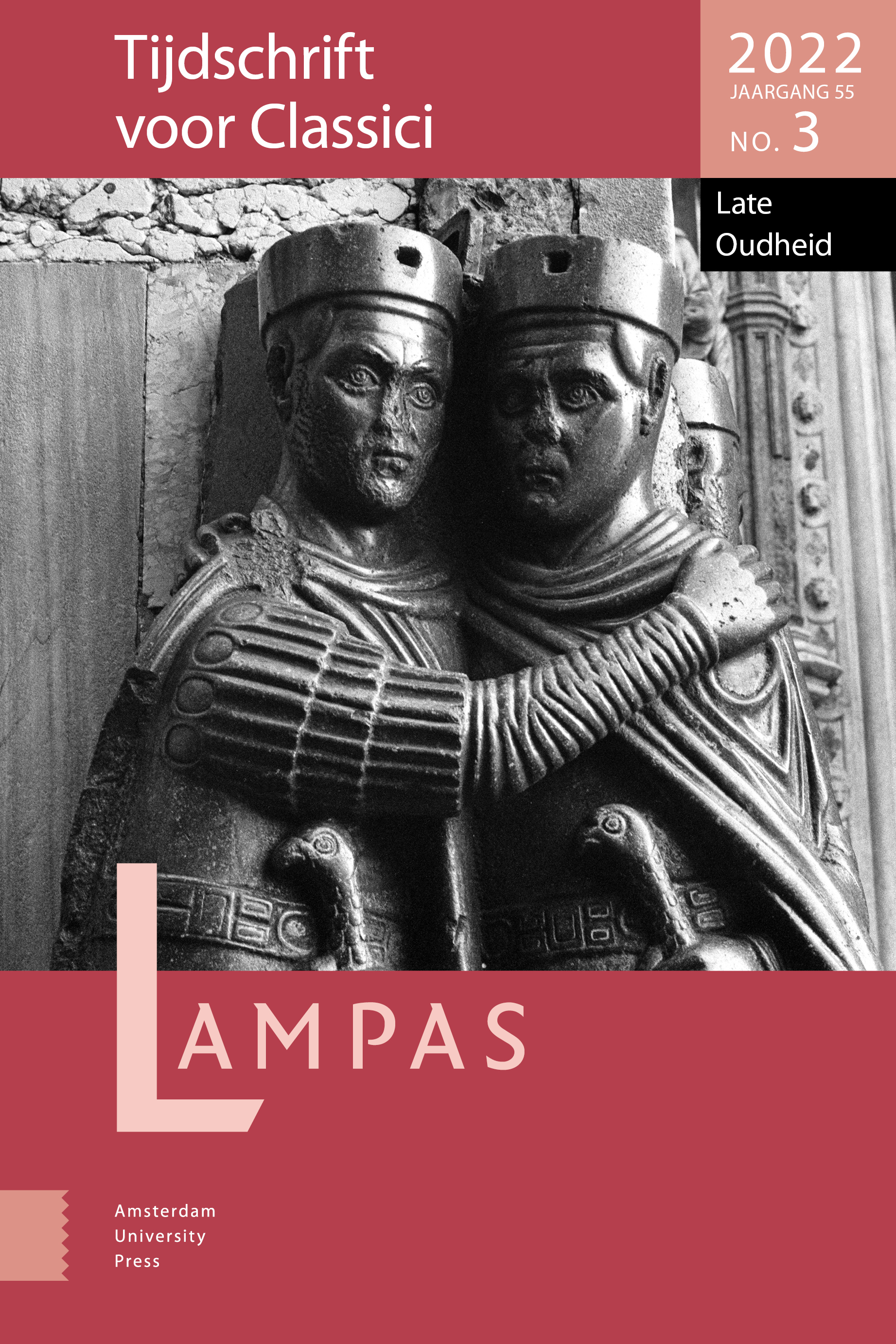-
oa De zwembroek van de apostel Petrus
- Amsterdam University Press
- Source: Lampas, Volume 55, Issue 3, okt. 2022, p. 303 - 322
-
- 01 okt. 2022
Samenvatting
The present article shows how in late antique literature Christianity and classical culture are intertwined like grapevines, by offering a literary comparison between Nonnus of Panopolis’ Paraphrase of the Gospel of John and his Dionysiaca. It gives an example of the way in which Nonnus’ spirit is present in both works, the former a biblical epic dictated by the rules of the paraphrase, the latter an exuberant free-flowing creative work on the pagan god Dionysus. After a brief sketch of the cultural context and the paraphrasing technique, I analyse Nonnus’ metaphors, relating them to the Gospel of John on the one hand and to the Dionysiaca on the other. I then demonstrate how Nonnus turns a simple remark about the apostle Peter jumping into the water (John 21:7-8) into a full-blown and vivid epic narration (Paraphrase 21.35-54). The swimming trunks of Peter show that the same writer’s blood pulses through both the Paraphrase and the Dionysiaca.


